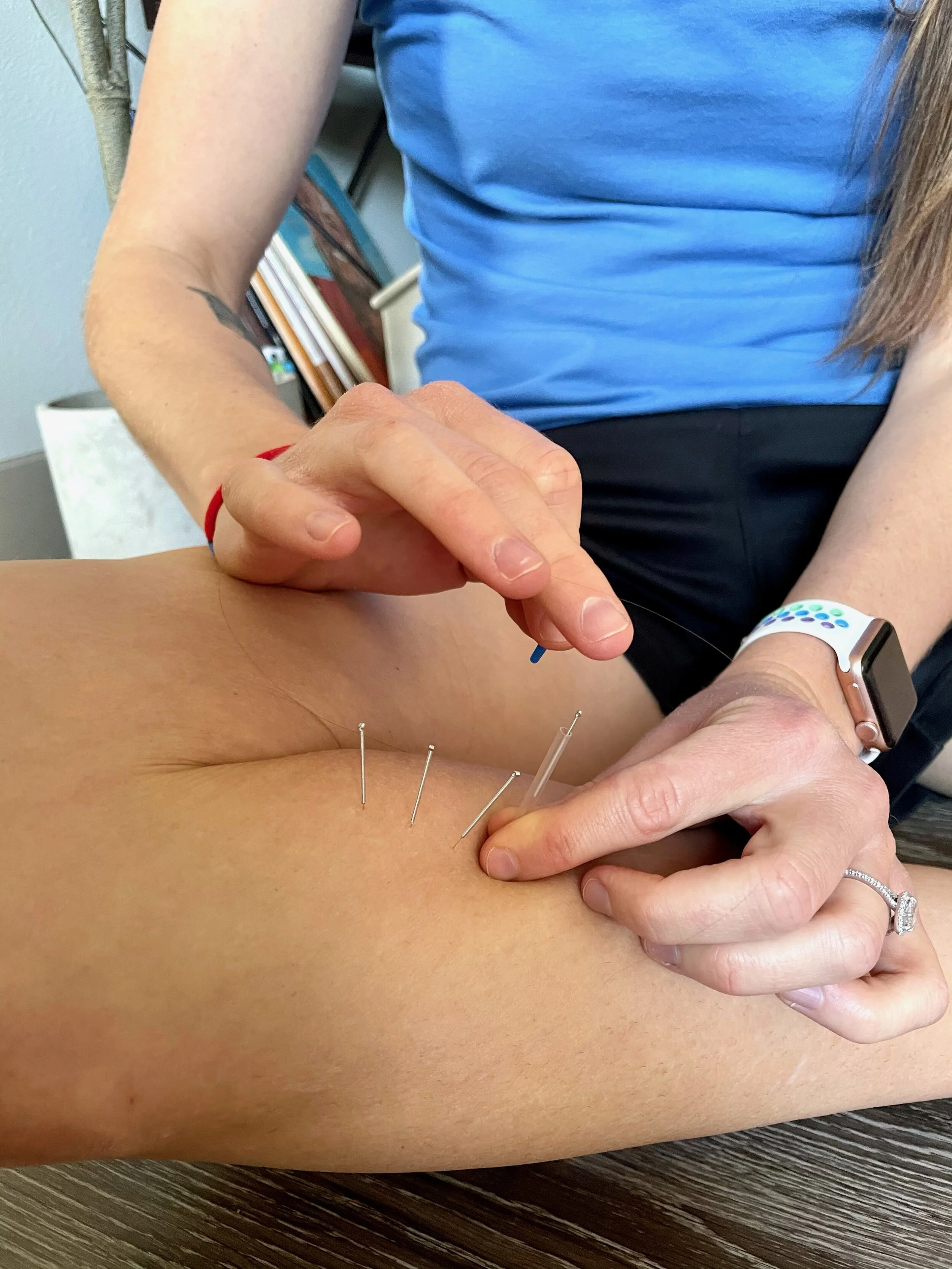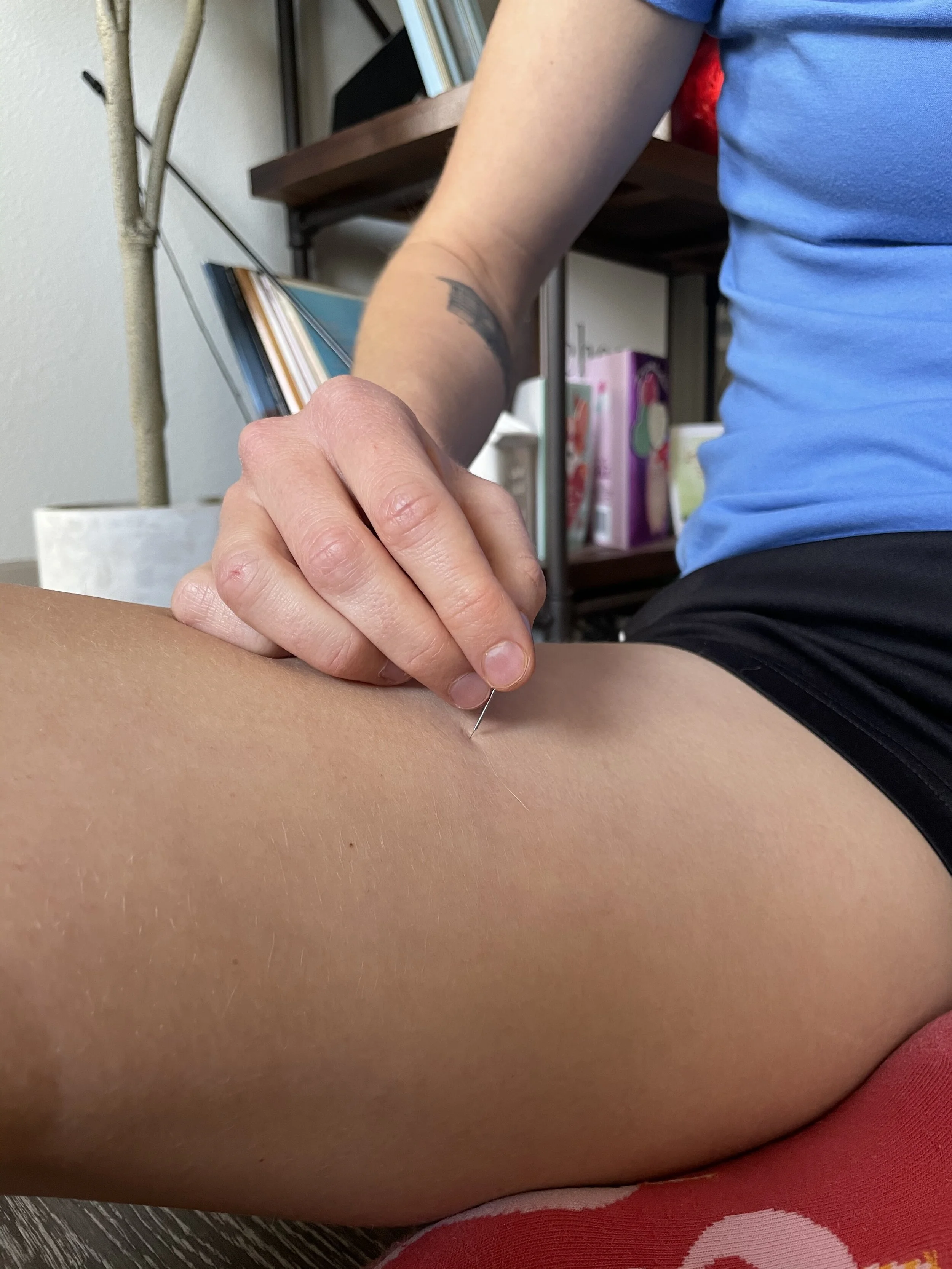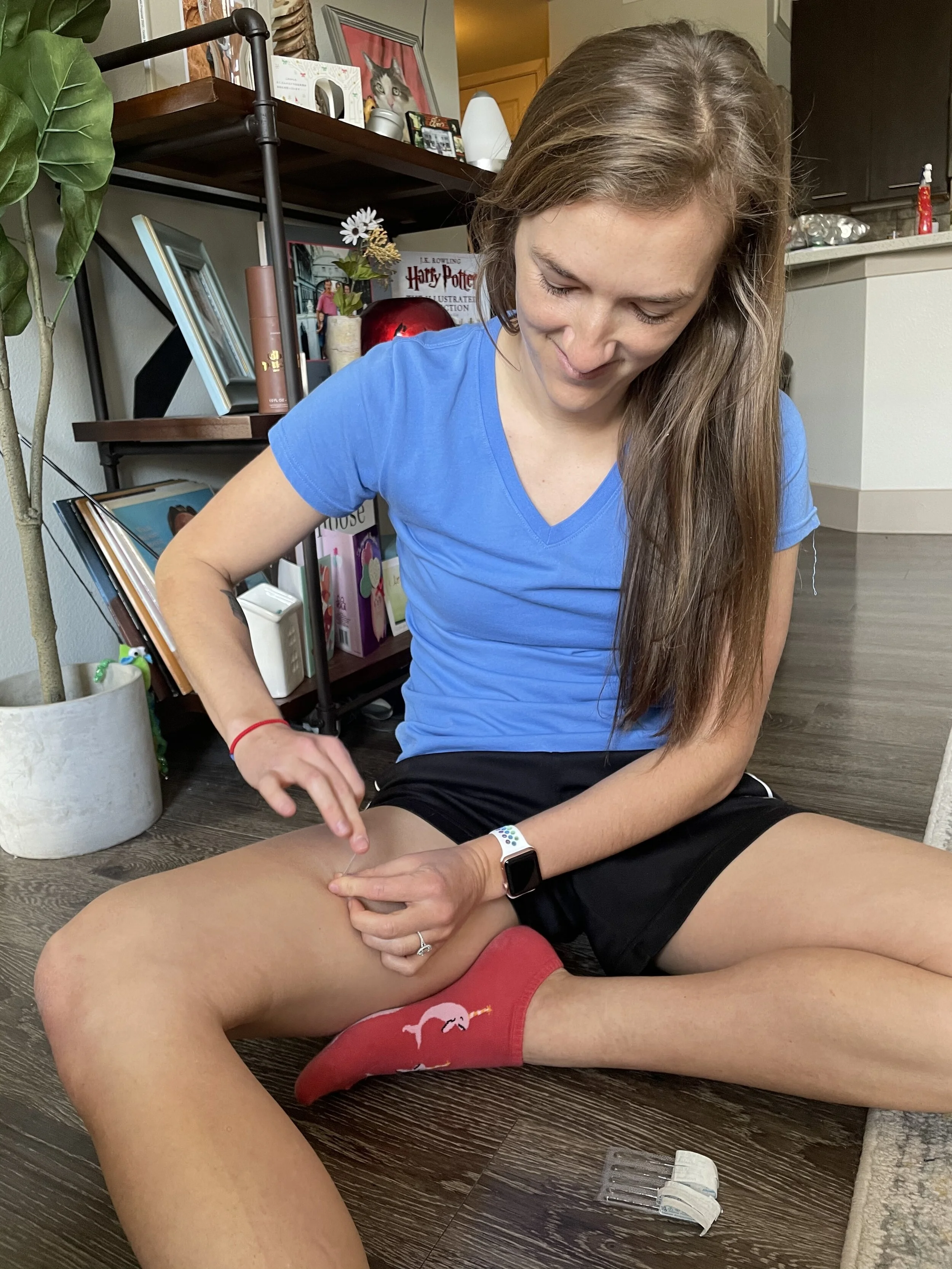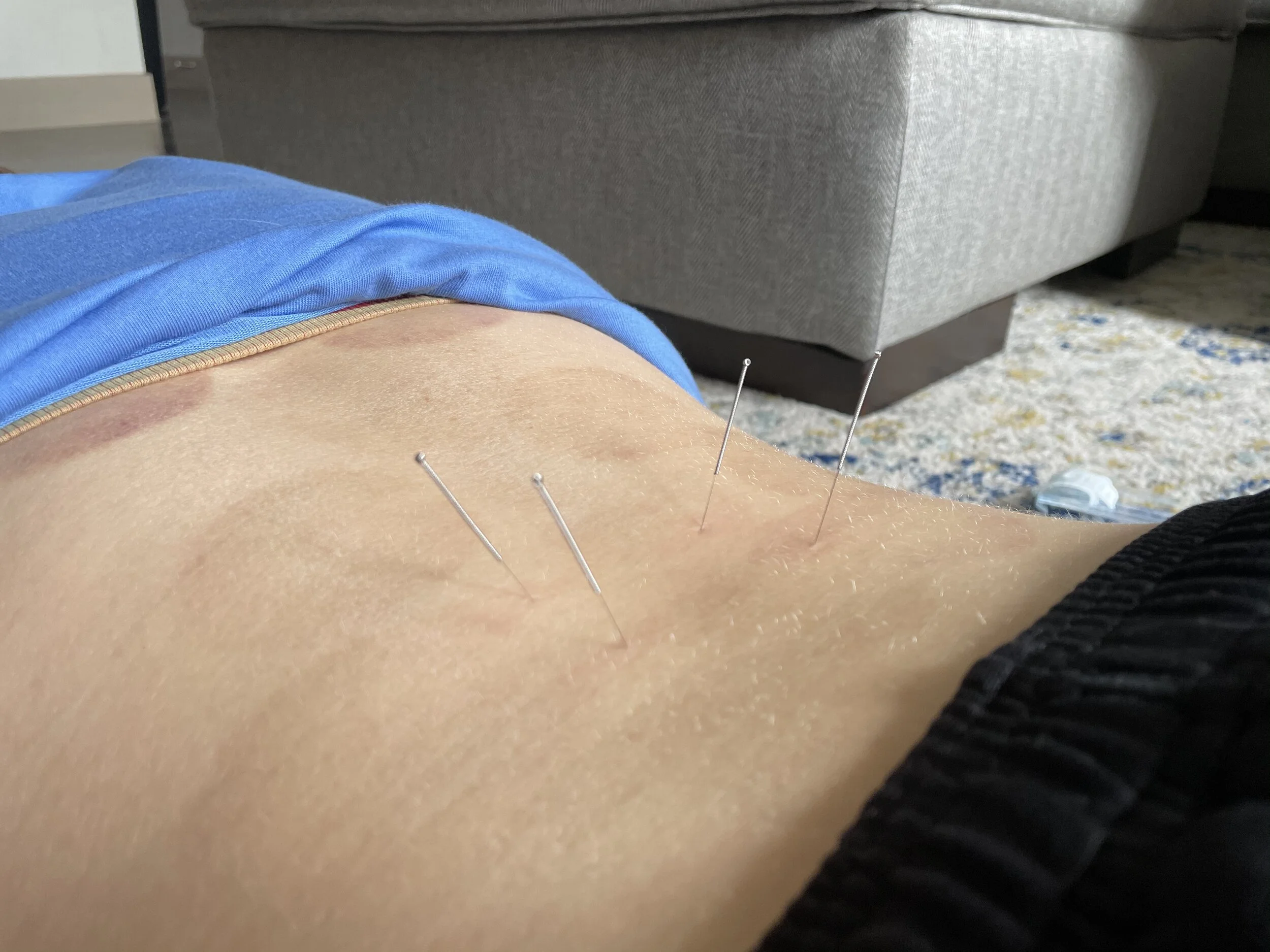You want to stick a needle, where? How dry needling can help your pelvic health!
Dry needling is a treatment technique that uses a fine filament needle (like an acupuncture needle) inserted through the skin into the muscle. It is used to treat trigger points or knots in your muscles that could be causes of pain or other symptoms. It can have positive impacts on the nervous system, normalize the inflammatory process to aide in healing, and decrease tension of muscles.
“What’s the difference between dry needling and acupuncture” is the most common question I get from patients after I bring up dry needling. The only similarity between the two lies in what type of needle is used.
Acupuncture uses specific points to heal the body and balance energy flow, while dry needling targets specific trigger or tender points and nerve pathways in a person. While the nerves are pretty much the same person, to person, trigger points can be in different places, depending on the person’s problem.
Dry needling can be used in many different pelvic floor conditions! The most obvious one being any type of pelvic, low back, hip or abdominal pain. If you can find a tender spot in a muscle, you can likely insert a needle in it and doing so, the muscle will relax. Remember that pelvic floor muscle tension is often the culprit behind a number of pelvic floor conditions like:
urinary urgency and frequency
constipation
incomplete bladder/bowel emptying
urge incontinence
pain with or after intercourse
tailbone pain
and many more!
Dry needling can help treat any of the above mentioned conditions.
I know some of you are thinking this isn’t for me, I hate needles, I don’t want to do this… but should I??" Great question - those who are scared of needles should not participate in dry needling. Seriously, needle phobia is a big no-no with dry needling, but there are plenty of other things that we can do for tension, (including cupping, stay tuned!) Also if a person is pregnant, they will not be needled in their first trimester and physician consent is required to have dry needling done in the 2nd and 3rd trimester.
Now you might be wondering, what does dry needling feel like?
While it can vary depending on what muscle is being needled and what level of tension that person has, in general, when needling a trigger point, it feels like a productive ache. It can vary in level of intensity, but most patients (including myself) find that it feels achey, but the kind of achey that feels like it is doing something.
You may remember that we also can needle in nerve fields! The goal of this is to reset the nerve pathway and get it out of the receptive pain cycle. Usually when needling in a nerve field, you do not feel much of anything. That may sound crazy, but it is a very small needle. Another thing to remember is that the body is covered like a spider web in tiny superficial nerves, if one of those nerves is hit, it might feel like a “zap” or it might feel kind of stingy. This isn’t harmful, in fact, it helps reset the nerve even more, but we do not need to keep resetting it so the therapist will remove the needle. If you were listening in while I am dry needling a patient, you will often hear me say “achey or stingy” after I insert the needle.
Dry needling is just one way we address pelvic floor tension at Lady Bird PT and if needling isn't for you, don't worry, we have a number of other options! If you are wondering if you would be appropriate for dry needling give us a call for a free 15 minute consultation at 512 - 766-2649 or contact us here.
Learn more about the author, Jessica Chastka, PT, DPT, WCS here.




